9th JULY 1969 TIGER ( PANTHERA TIGRIS ) NATIONAL ANIMAL OF INDIA ( BHARAT )
User:Vibhijain/National symbols of India
From Wikipedia, the free encyclopedia
The Republic of India has several official national symbols including a a flag, an emblem, an anthem, a calendar as well as several other symbols. All the symbols were picked up at various times. The design of the national flag was adopted by the Constituent Assembly just before independence, on July 22, 1947.[1] There are also several other symbols including the national animal, bird, flower and tree.[2]
Contents
[hide]- 1 Father of the Nation
- 2 National Flag
- 3 State Emblem
- 4 National Motto
- 5 National Calender
- 6 National Anthem
- 7 National language
- 8 National Song
- 9 Floral emblem
- 10 National Fruit
- 11 National Animal
- 12 National Bird
- 13 National Aquatic Animal
- 14 National Heritage Animal
- 15 National River
- 16 National Game
- 17 National Tree
- 18 National Personification
- 19 References
- 20 External links
Father of the Nation[edit]
Main article: Mohandas Karamchand Gandhi
Mohandas Karamchand Gandhi, often referred to as Mahatma, was the pre-eminent political and ideological leader of India during the Indian independence movement. The title of the Father of the Nation was used by Subhas Chandra Bose in a radio address from Singapore in 1944[3]. He is also recognized by the Indian government as the Pater Patriae[4]. Gandhi has a strong current impact on India. Gandhi's birthday, 2 October, is a national holiday in India, Gandhi Jayanti, and is celebrated around the world as International Day of Non-Violence[5][6]. India observes 30 January the day of his assassination, as Martyr's Day, to commemorate those who gave up their lives in service of the Indian nation.[7] There are two temples in India dedicated to Gandhi. One is located at Sambalpur in Odisha and the other at Nidaghatta village near Kadur in Chikmagalur district of Karnataka.[8] Gandhi also appears on every Indian Rupee note.[9]
National Flag[edit]
Main article: Flag of India
The national flag of India is a horizontal rectangular tricolour of Deep saffron, White and Dark green with the Ashok Chakra, a 24-spoke wheel, in navy blue at its centre. It was adopted in its present form during a meeting of the Constituent Assembly held on 22 July 1947, when it became the official flag of the Dominion of India. The flag was subsequently retained as that of the Republic of India. The flag was proposed by Nehru at the Constituent Assembly on 22 July 1947 as a horizontal tricolor of deep saffron, white and dark green in equal proportions, with the Ashoka wheel in blue in the centre of the white band. Nehru also presented two flags, one in Khadi-silk and the other in Khadi-cotton, to the assembly. The resolution was approved unanimously.[10] It served as the national flag of the Dominion of India between 15 August 1947 and 26 January 1950, and has served as the flag of theRepublic of India since then.[11]
State Emblem[edit]
Main article: Emblem of India
The emblem of India is an adaptation of the Sarnath Lion Capital of Ashoka.It was adopted as the National Emblem of India on 26 January 1950, the day that India became a republic.[12] The emblem forms a part of the official letterhead of the Government of India, and appears on all Indian currency as well. It also sometimes functions as the national emblem of India in many places and appears prominently on the diplomatic and national Passportof the Republic of India. The wheel "Ashoka Chakra" from its base has been placed onto the center of the National Flag of India.
National Motto[edit]
Main article: Satyameva Jayate
Satyameva Jayate is a Hindu mantra from the ancient scripture Mundaka Upanishad.[13] Upon independence of India, it was adopted as the national motto of India.[14] It is inscribed in Devanagari script at the base of the national emblem. The emblem and words 'Satyameva Jayate' are inscribed on one side of all Indian currency. The emblem is an adaptation of the Lion Capital of Asoka which was erected around 250 BCE at Sarnath, nearVaranasi in the north Indian state of Uttar Pradesh, but does not contain the motto. The origin of the motto is a well-known mantra 3.1.6 from the Mundaka Upanishad.[14]
National Calender[edit]
Main article: Indian national calendar
The Indian national calendar (sometimes called Saka calendar) is the official civil calendar in use in India. It is used, alongside the Gregorian calendar, by The Gazette of India, news broadcasts by All India Radio, and calendars and communications issued by the Government of India.[15] The term may also ambiguously refer to the Hindu calendar, and the Saka era is commonly used by different calendars as well.The calendar was introduced by the Calendar Reform Committee in 1957, as part of the Indian Ephemeris and Nautical Almanac, which also contained other astronomical data, as well as timings and formulae for preparing Hindu religious calendars, in an attempt to harmonise this practice. Despite this effort, local variations based on older sources such as the Surya Siddhanta may still exist. Usage officially started at Chaitra 1, 1879 Saka Era, or March 22, 1957. However, government officials seem to largely ignore the New Year's Day of this calendar in favour of the religious calendar.[16]
National Anthem[edit]
Main article: Jana Gana Mana
Jana Gana Mana is the national anthem of India. Originally written in highly Sanskritized (Tatsama) Bengali, it is the first of five stanzas of a Brahmo hymn composed and scored by Nobel laureate Rabindranath Tagore. It was first sung at the Calcutta Session of the Indian National Congress on 27 December 1911. The music for the present National Anthem was composed by Captain Ram Singh Thakur of the Subhash Chandra Bose led Indian National Army, as Qaumi Tarana of the INA at Singapore in 1943. Jana Gana Mana was officially adopted by the Constituent Assembly as the Indian national anthem on January 24, 1950.[17][18][19] [20][21][22][23] A formal rendition of the national anthem takes fifty-three seconds. A shortened version consisting of the first and last lines (and taking about 20 seconds to play) is also staged occasionally.[17] Tagore wrote down the English translation of the song and along with Margaret Cousins (an expert in European music and wife of Irish poet James Cousins), set down the notation which is followed till this day.[24]
National language[edit]
Main article: Languages of India
Neither the Constitution of India nor Indian law specifies a National language. India specifies Hindi and English as official languages of the India de jure. Article 343 of the constitution specifies that the official language of the India is Hindi in Devanagari script. Article 354 states that a state of India may officially adopt one or more languages in use in the state or Hindi/English as the language or languages to be used for all or any of the official purposes of that state.[25] Section 8 of The Official Languages Act of 1963 (as amended in 1967) empowers the Union Government to make rules regarding the languages which may be used for the Official purposes of the Union, for transaction of business in Parliament, and for communication between the Union Government and the states.[26] Section 3 of G.S.R. 1053, titled "Rules, 1976 (As Amended, 1987)" specifies that communications from a Central (Union) Government office to a State or a Union Territory in shall, save in exceptional cases (Region "A") or shall ordinarily (Region "B"), be in Hindi, and if any communication is issued to any of them in English it shall be accompanied by a Hindi translation thereof.[27] Section 3 of G.S.R. 1053, titled "Rules, 1976 states Communications from a Central Government office to State or Union Territory in Region "C" or to any office (not being a Central Government office) or person in such State shall be in English. Region C (South India) covers Tamil Nadu, Kerala , Karnataka and Andhra Pradesh [28]
National Song[edit]
Main article: Vande Mataram
Vande Mataram is a poem from the famed novel Anandamath which was written by Bankim Chandra Chattopadhyay in 1882. It was written in Bengali and Sanskrit. In 1950 (after India's independence), the song's first two verses were given the official status of the "national song" of the Republic of India, distinct from the national anthem of India Jana Gana Mana. The designation as "national song" predates independence, dating to 1937. At this date, the Indian National Congress discussed at length the status of the song. It was pointed out then that though the first two stanzas began with an unexceptionable evocation of the beauty of the motherland, in later stanzas there are references where the motherland is likened to the Hindu goddess Durga. Therefore, INC decided to adopt only the first two stanzas as the national song.
The controversy becomes more complex in the light of Rabindranath Tagore's rejection of the song as one that would unite all communities in India. In his letter to Subhash Chandra Bose (1937), Tagore wrote:
In a postscript to this same letter, Tagore says:
Rajendra Prasad, who was presiding the Constituent Assembly on January 24, 1950, made the following statement which was also adopted as the final decision on the issue:
| “ | ...The composition consisting of words and music known as Jana Gana Mana is the National Anthem of India, subject to such alterations as the Government may authorise as occasion arises, and the song Vande Mataram, which has played a historic part in the struggle for Indian freedom, shall be honored equally with Jana Gana Mana and shall have equal status with it. (Applause) I hope this will satisfy members. (Constituent Assembly of India, Vol. XII, 24-1-1950) | ” |
Floral emblem[edit]
Main article: Nelumbo nucifera
Nelumbo nucifera, or simply Lotus, is the Floral emblem of India. It is a sacred flower and occupies a unique position in the art and mythology of ancient India and has been an auspicious symbol of Indian culture since time immemorial. The reason this flower was chosen is because it signifies that which keeps itself pure even when living in a rough environment.[30]
National Fruit[edit]
Main article: Mango
The species was brought to East Asia around 400-500 BCE from India.[31] Mango is the national fruit of India, Philippines and Pakistan. It finds mention in the songs of 4th century CESanskrit poet, Kalidasa, prior to it is believed to have been tasted by Alexander (3rd century BCE) and Chinese pilgrim, Hieun Tsang (7th century CE). Later in 16th century Mughal Emperor, Akbar planted 100,000 mango trees in Darbhanga, Bihar at a place now known as Lakhi Bagh [32] In Hinduism, the perfectly ripe mango is often held by Lord Ganesha as a symbol of attainment, regarding the devotees potential perfection. Mango blossoms are also used in the worship of the goddess Saraswati. Mango leaves are used to decorate archways and doors in Indian houses and during weddings and celebrations like Ganesh Chaturthi. Mango motifs and paisleys are widely used in different Indian embroidery styles, and are found in Kashmiri shawls, Kanchipuram silk sarees, etc. Paisleys are also common to Iranian art, because of its pre-Islamic Zoroastrian past. In Tamil Nadu, Mango is considered, along with Banana and jack fruit, as the Three royal fruits (Mukkani).
National Animal[edit]
Main article: Panthera tigris
Panthera tigris is the national animal of India. Out of eight races of the species known, the Indian race, the Royal Bengal Tiger, is found throughout the country except in the north-western region and also in the neighbouring countries, Nepal, Bhutan and Bangladesh. To check the dwindling population of tigers in India, 'Project Tiger' was launched in April 1973. So far, 27 tiger reserves have been established in the country under this project, covering an area of 37,761 sq km.[33]
The Bengal tiger has been a national symbol of India since about the 25th century BCE when it was displayed on the Pashupati seal of the Indus Valley Civilisation. On the seal, the tiger, being the largest, represents the Yogi Shiva's people.[34] The tiger was later the symbol of the Chola Empire from 300 CE to 1279 CE and is now designated as the official animal of India.[33]
The Project Tiger initiative launched in 1972 initially reversed the population decline, the decline has resumed in recent years; India's tiger population decreased from 3,642 in the 1990s to just over 1,400 from 2002 to 2008.[35]Since then, the Indian government has undertaken several steps to reduce the destruction of the Bengal tiger's natural habitat in India.
National Bird[edit]
Main article: Indian Peafowl
Indian Peafowl is the national bird of India.[36] Prominent in many cultures, the peacock has been used in numerous iconic representations, including being designated the national bird of India in 1963.[37] The peacock, known as Mayura in Sanskrit, has enjoyed a fabled place in India since and is frequently depicted in temple art, mythology, poetry, folk-music and traditions.[38] Many Hindu deities are associated with the bird, Krishna is often depicted with a feather in his headband, while worshippers of Shiva associate the bird as the steed of the God of war, Karthikeya (also known as Skanda or Murugan). In Buddhist philosophy, the peacock represents wisdom.[39]Peacock feathers are used in many rituals and ornamentation. Peacock motifs are widespread in Indian temple architecture, old coinage, textiles and continue to be used in many modern items of art and utility.[40]
National Aquatic Animal[edit]
Main article: South Asian River Dolphin
Ganges River Dolphin is the National Aquatic Animal of India. This animal was given this title as it represents the purity of the Ganges as this mammal only survives in pure and fresh water. They are locally known as susu, due to the sound which is made while breathing. It is critically endangered in India and has been included in the Schedule I for the Wildlife (Protection) Act, 1972. The main reasons for the decrease in its population are poaching and habitat degradation and construction of barrages resulting in physical barrier for this species.[41]
National Heritage Animal[edit]
Main article: Asian elephant
Asian elephant is the National Heritage Animal of India. This status was given to this animal due to the decline in its polulation. The Environment and Forest Ministry recommended to give this title to this species and the Elephant Task Force was approved by the standing committee of National Board of Wildlife on October 13 2010. There are over 25,000 elephants in the country, including 3,500 in zoos and temples-- specially in Kerala and north-eastern parts of India.[42]
National River[edit]
Main article: Ganges
The Ganges or Ganga, is a trans-boundary river of India and Bangladesh. The river rises in the western Himalayas in the Indian state of Uttarakhand, and flows south and east through the Gangetic Plain of North India into Bangladesh, where it empties into the Bay of Bengal. By discharge it ranks among the world's top 20 rivers.[43] The Ganges is the most sacred river to Hindus and is also a lifeline to millions of Indians who live along its course and depend on it for their daily needs.[44] It is worshiped as the goddess Ganga in Hinduism.[45] It has also been important historically: many former provincial or imperial capitals (such as Patliputra,[46] Kannauj,[46] Kara, Kashi, Allahabad, Murshidabad, Munger, Baharampur and Kolkata) have been located on its banks. In November 2008, the Ganges, alone among India's rivers, was declared a "National River", facilitating the formation of a Ganga River Basin Authority that would have greater powers to plan, implement and monitor measures aimed at protecting the river.[47]
National Game[edit]
Main article: Field hockey
Hockey is the national sport of India.[48][49] The Indian men's hockey team is the most successful hockey team in Olympic history with 8 gold, 1 silver, and 2 bronze medals. Indian hockey's golden era was from 1928-1956, when the Indian hockey team successively won six Olympic gold medals.
National Tree[edit]
Main article: Ficus benghalensis
Banyan, or Ficus benghalensis, is the national tree of India. Ficus benghalensis produces propagating roots which grow downwards as aerial roots. Once these roots reach the ground, they grow into woody trunks that can become indistinguishable from the main trunk. This tree is considered sacred in India, and often shelters a little or larger temple underneath. Even today, most village council meets under this tree.[50]
National Personification[edit]
Bhārat Mātā is the national personification of India as a mother goddess. She is usually depicted as a woman clad in a saffron sari holding a flag, and sometimes accompanied by a lion.[51] The image of Bhāratmātā formed with the Indian independence movement of the late 19th century. A play by Kiran Chandra Bandyopadhyay, Bhārat Mātā, was first performed in 1873. Bankim Chandra Chattopadhyay's 1882 novel Anandamath introduced the hymn "Vande Mātaram",[52] which soon became the song of the emerging freedom movement in India.
Bipin Chandra Pal insisted that elaborated its meaning in idealizing and idealist terms, along with Hindu philosophical traditions and devotional practices. It represented an archaic spiritual essence, a transcedental idea of Universe as well as expressing Universal Hinduism and nationhood.[53]
Abanindranath Tagore portrayed Bhārat Mātā as a four-armed Hindu goddess wearing saffron-colored robes, holding a book, sheaves of rice, a mala, and a white cloth.[54]The image of Bharatmatha was an icon to create nationalist feeling in Indians during the freedom struggle. Sister Nivedita, an admirer of the painting, opined that the picture was refined and imaginative, with Bharatmata standing on green earth and blue sky behind her; feet with four lotuses, four arms meaning divine power; white halo and sincere eyes; and gifts Shiksha-Diksha-Anna-Bastra of motherland to her children.[55]
National Symbols of India and Their Meaning
April 23, 2013
National symbols of India depict the country’s image and have been chosen very carefully. The National animal, tiger symbolizes power, the National flower, lotus symbolizes purity, the National tree, banyan symbolizes immortality, the National bird, peacock symbolizes elegance and the National fruit, mango symbolizes the tropical climate of India. Similarly, our National song and National anthem were a source of inspiration during the freedom struggle. The National Emblem of India depicts four lions standing back to back, symbolizing power, courage, pride and confidence. Hockey was at its peak when it was adopted as the National game of India. Here is some more information about the National symbols of India:
List of National Symbols of India
 National Bird of India:
National Bird of India:The peacock was declared the National bird of India in 1963, because it was entirely a part of Indian custom and culture. A peacock is a symbol of grace and beauty. Another reason why the peacock was chosen as the National bird was because of its presence across the country, so much so that even common people are familiar with the bird. Moreover, no other country had the peacocok as its national bird either. The peacock fulfilled all these and hence became the national bird of India.
 National Animal of India: The tiger is known as the Lord of the Jungle and displays India’s wildlife wealth. Also strength, agility and power are the basic aspect of the tiger. The Bengal Tiger was declared as the National Animal of India in April 1973, with the initiation of Project Tiger, to protect the tigers in India. Prior to this, the lion was the National animal of India.
National Animal of India: The tiger is known as the Lord of the Jungle and displays India’s wildlife wealth. Also strength, agility and power are the basic aspect of the tiger. The Bengal Tiger was declared as the National Animal of India in April 1973, with the initiation of Project Tiger, to protect the tigers in India. Prior to this, the lion was the National animal of India. National Anthem of India: The National Anthem of India is the Hindi version of an anthem which was originally composed in Bengali by Rabindranath Tagore. It was adopted as the National Anthem of India on 24 January 1950. Since the Bengali song ‘Vande Mataram’ faced opposition from non-Hindu segments of society, the Jana Gana Mana was adopted as the National Anthem of India.
National Anthem of India: The National Anthem of India is the Hindi version of an anthem which was originally composed in Bengali by Rabindranath Tagore. It was adopted as the National Anthem of India on 24 January 1950. Since the Bengali song ‘Vande Mataram’ faced opposition from non-Hindu segments of society, the Jana Gana Mana was adopted as the National Anthem of India. National Flower of India: The lotus flower has a very significant position in Indian mythology. It is the flower of goddess Laxmi and symbolizes wealth, prosperity, and fertility. Also, it grows very uniquely in dirty water with its long stalk far above the water, bearing the flower on the top. The lotus flower remains untouched from impurity. It symbolizes purity, achievement, long life, and good fate.
National Flower of India: The lotus flower has a very significant position in Indian mythology. It is the flower of goddess Laxmi and symbolizes wealth, prosperity, and fertility. Also, it grows very uniquely in dirty water with its long stalk far above the water, bearing the flower on the top. The lotus flower remains untouched from impurity. It symbolizes purity, achievement, long life, and good fate. The National Fruit of India: Mangoes are native to India and thus truly Indian. Since time immemorial, mangoes have been cultivated in India. In ancient times as well, deliciousness of mangoes have been defined by many renowned poets. The great Moghul emperor Akabar had planted about 100,000 mango trees in Lakhi Bagh in Darbhanga.
The National Fruit of India: Mangoes are native to India and thus truly Indian. Since time immemorial, mangoes have been cultivated in India. In ancient times as well, deliciousness of mangoes have been defined by many renowned poets. The great Moghul emperor Akabar had planted about 100,000 mango trees in Lakhi Bagh in Darbhanga. The National Song of India: India’s national song was composed in Sanskrit by Bankimchandra Chatterji. It has inspired many freedom fighters during the freedom struggle. Initially Vande Mantaram was the National Anthem of India, but after independence Jana Gana Mana was adopted as the National Anthem. This was done because non-Hindu communities in India had considered Vande Mataram as biased. These communities felt that the nation was represented by ‘Ma Durga’ in the song. So that is why it was made the National song of India and not the National Anthem.
The National Song of India: India’s national song was composed in Sanskrit by Bankimchandra Chatterji. It has inspired many freedom fighters during the freedom struggle. Initially Vande Mantaram was the National Anthem of India, but after independence Jana Gana Mana was adopted as the National Anthem. This was done because non-Hindu communities in India had considered Vande Mataram as biased. These communities felt that the nation was represented by ‘Ma Durga’ in the song. So that is why it was made the National song of India and not the National Anthem. The National Game of India: In spite of cricket’s huge popularity in India, hockey is still the National game of India. Hockey when declared as the National game was very popular. The game has seen a golden era during 1928-1956, when India won 6 consecutive gold medals in the Olympics. Hockey was considered as the National game because of its unmatched distinction and incomparable talent at the time. At that time India had played 24 Olympic matches and won all of them.
The National Game of India: In spite of cricket’s huge popularity in India, hockey is still the National game of India. Hockey when declared as the National game was very popular. The game has seen a golden era during 1928-1956, when India won 6 consecutive gold medals in the Olympics. Hockey was considered as the National game because of its unmatched distinction and incomparable talent at the time. At that time India had played 24 Olympic matches and won all of them. The National Tree of India: The Banyan tree represents eternal life, because of its ever-expanding branches. The country’s unity is symbolized by the trees huge structure and its deep roots. The tree is also known as Kalpavriksha, which means ‘wish fulfilling tree’.The Banyan tree is called so, because the Banyan tree has immense medicinal properties and is associated with longevity. The Banyan tree also gives shelter to many different kinds of animals and birds, which represent India and its people from different races, religions and castes.
The National Tree of India: The Banyan tree represents eternal life, because of its ever-expanding branches. The country’s unity is symbolized by the trees huge structure and its deep roots. The tree is also known as Kalpavriksha, which means ‘wish fulfilling tree’.The Banyan tree is called so, because the Banyan tree has immense medicinal properties and is associated with longevity. The Banyan tree also gives shelter to many different kinds of animals and birds, which represent India and its people from different races, religions and castes. The National Emblem of India: The Lion Capital of Ashoka at Sarnath is the National Emblem of India. It consists of four Asiatic Lions standing back to back on a circular abacus. The abacus has sculptures of an elephant, a horse, a bull and a lion. These are separated by wheels in between. The National Emblem stands on a full bloomed inverted lotus flower.
The National Emblem of India: The Lion Capital of Ashoka at Sarnath is the National Emblem of India. It consists of four Asiatic Lions standing back to back on a circular abacus. The abacus has sculptures of an elephant, a horse, a bull and a lion. These are separated by wheels in between. The National Emblem stands on a full bloomed inverted lotus flower.
Read more:
Jallianwala Bagh
National Library of India
Indian National Flag
National Anthem controversy
Development in India After Independence
Unsung Heroes of Indian Independence
National Library of India
Indian National Flag
National Anthem controversy
Development in India After Independence
Unsung Heroes of Indian Independence
More articles from Ramandeep Kaur :
Comments
Showing 46 Comments :
Very useful to all and thanks a lot
Very helpful nd quiet good…:-)
very helpful
I LOVE MY INDIA, becouse MY INDIA IS GREAT COUNTRY.
Wow fantsstic
Very nice at all
We need to have more National symbols described such as National language, National Calender, National commitment,National currency, National policy etc.
It is really awesome . I really happy to say that I am indian . I love my INDIA.
thanks,these knowledge are very important for every Indian
it is very useful and i love my india and indians jai hind
i love my country INDIA and this information was useful but only querry I have is that hockey is not national sport of india. this article is clearly mentioned in times of india.So please clearify it.
crucial and thematic information and people knows the main reason putting these as national ones.
it was very helpful for me.
thanx………
thanx………
Very helpful
This is really helpful. I love India.
what is the national fish?
gangetic dolphin is our national dolphin
Dis means lots me n my two little daughter.
I LOVE MY INDIA….
This is so helpfull for my son and me also
I love my india thank u for ur information this information is vry useful to my sister
Iove my india
I LOVE MY INDIA
I Love My India.l Am Proud of India.
I LOVE MY INDIA
I love my india
thanks to give this information
i love my india
I am very proud that i born in India.I love to India.I love my India.
I love my country India.When my school teacher gives me a project on the topic national symbols of India I am very exicted
It’s really helpful
I want go to india
This is so helpful……
this info really helps me with the india project I’m doing in school. i like the tiger and the lotus flower because what it symbolizes
this info really helps me with the india project I’m doing in school
O.K want to give the scientific name for some national emblems like tree,bird,flower,fruit,heritage animal,fish,water animal etc.
by ANAS POOKKOTTUR,
Malappuram,Kerala.
by ANAS POOKKOTTUR,
Malappuram,Kerala.
Thankyou for these information,my brother got the help for its social studies projects.
I am love to india i love my india
I am very glad so i am indian
This Website Gives me All the Information I need…thank u
Really good information for childrens …
sorry to say mam , but there is no national game defined in our constitution ,”In RTI reply, Centre says India has no national game”.
I HAD GOT A HOMEWORK AND THIS WEBSITE GIVES ME ALL THE INFORMATION I NEED .THIS IS AMAZING!!!!!
Being from Canada, but having a few friends from Gujarat, this was a fantastic and insightful discovery for me. Thanks! It helps me to understand the way of India 
now the time comes to show the creativity and eradication of bad things.
I HAD GOT A HOMEWORK AND THIS WEBSITE GIVES ME ALL THE INFORMATION I NEED .THIS IS AMAZING!!!!!

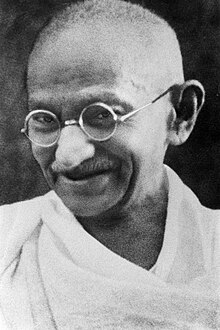




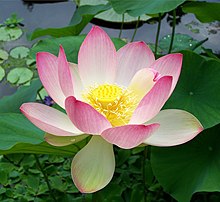

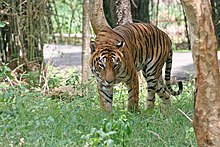


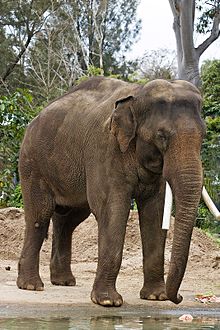
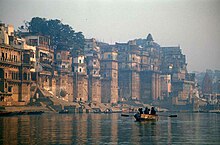






No comments:
Post a Comment